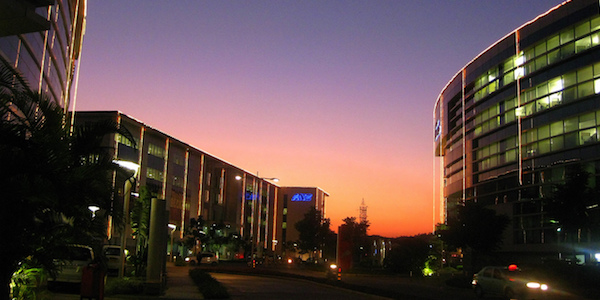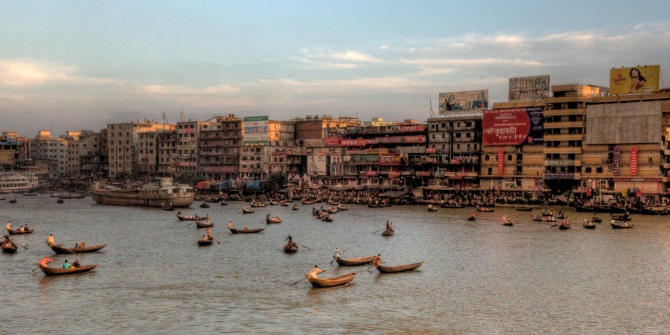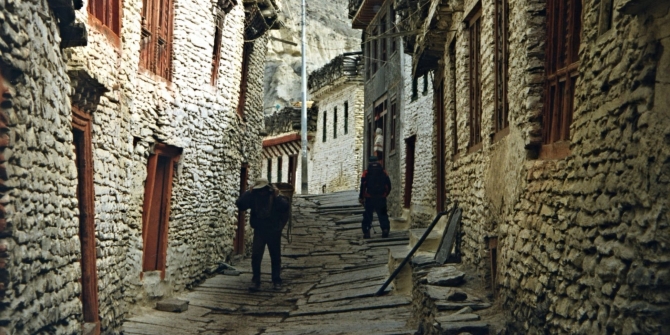 The aim of transforming urban roads in Bangalore into “world-class” roads by Tender-SURE is more of an imposition rather than a true representation of the informed collective aspirations of citizens, writes G Sai Sanath.
The aim of transforming urban roads in Bangalore into “world-class” roads by Tender-SURE is more of an imposition rather than a true representation of the informed collective aspirations of citizens, writes G Sai Sanath.
Formalised in 2012, Tender-SURE (Tender Specification for Urban Road Execution) is an urban roads development project in Bangalore city with a particular focus on pedestrians and cyclists. This initiative is the product of deep collaboration between local government and civil societies. Premised on the notion of “world-class”, this project is seen as the “…start of transforming our city to respond to the aspirations of its citizens”, regarded as best practice, a model template that is first of its kind in India, aimed for replicating across the state and the country.
The fascination with “world-class” imaginary is persistent in a range of development projects across the country – creation of the capital city by Andhra Pradesh state or the citizen’s aspiration as the base for smart city development. Scholarship on governance in Indian cities reveals the influence of civic groups and private entities, whose imaginaries constitute the visual appeals of developed countries with a quiet disregard for the aspirations of marginal sections. The aesthetic and functional objectives of Tender-SURE are focussed on the spatial (sidewalks) and material qualities of the spaces, which points to the notion that architecture and urban design are meant for achieving the visual aspirations only. However, to recognise them as containers of social differences that can lead to informed collective aspirations requires an understanding of how such development projects are entangled with everyday life.
The aspiration to make Indian cities “world-class” has two interrelated concepts – the nature of public space and the imaginaries by authorities, professionals and prominent citizens. Even though cities across the world are connected by “mechanisms of the market” each city has a unique set of spatial and social formations. The intermingled conceptions between how a city should be and how a city is, is closely related to thinking for urban design and thinking about urban design – the former concentrates on the application aspects, whereas the latter concentrates on the social aspects.
Project Tender-SURE is envisaged as a replicable solution to a problem, but a “wicked problem” being unique, is resolved more in relative terms than in absolute terms. When predominance of “world-class” visual imaginaries is an inevitable component of urban development, wicked problems act as a bridge to understand the spatial imposition by the authorities & professionals and spatial disposition by the vulnerable sections of the society. Projects such as Tender-SURE deliver the world-class status, but to what extent this achievement accommodates informed collective aspirations is a matter of concern, especially given the nature of public space in India.
Public space in India is an amalgamation of spatial claims by marginal sections for survival and subsistence and spatial uses by middle-class and the elites for recreation and leisure. The scholarly study by David Sadoway and Govind Gopakumar about Tender-SURE reveals that it is inclined towards private interests and ease of mobility. Two of the prominent roads in Bangalore city, Vittal Mallya Road and Church Street are imagined to resemble buildings of New York and streets of Paris, and “the signal near MG Road will be redone to look like Times’ Square”. It seems inevitable to ask, what exactly translates into the aspiration of “world-class”? Further, such mono aspirations strengthen the nature of public space in Bangalore city as reflective of the asymmetric tensions between “idealised imaginaries of the west” and pre-colonial attitudes of the east. In this regard, it is imperative to know, what potentials, what prudence and what confluence of forces constitute the urban design aspects that are evident but not embedded in projects like Tender-SURE.

The sun sets over Bangalore. Image credit: Ishwar, Flickr, CC BY 2.0.
Potentials
There is no doubt that sidewalk forms an important type of public space. In South-Asian countries, sidewalks are the lifeline for the urban poor. They are advocated to be planned as “infrastructure, as spaces of everyday life and as leisure destinations”. Sidewalks as spaces of everyday life constitute the extreme notions associated with architecture and urban design – hygienic, aesthetic and ordered aspects of spaces on one side and haphazard, chaotic and disordered nature of spaces on the other side. With time as the basis, the “rote and the novel” co-evolve from the spaces and activities of everyday life, which are not residual but a fine blend of physical, sensorial & emotional aspects relative to the built environment. In India, the official recognition of street vendors further elevates sidewalks as a distinct type of public space, when actualised it can accrue benefits that enhance the physical, social and economic dimensions of the city. In order to realise these potentials, the vision and aspirations behind projects such as Tender-SURE should be socially and spatially inclusive, because sidewalk as a public space evolves over time. However, it is an irony that licenses for street vendors in Bangalore are being issued after more than a decade of their official recognition, whereas the project that is driven by world-class aspirations is being realised on immediate priority.
Prudence
There is no doubt that “world-class” imaginaries are imports from the developed nations. It would be prudent to understand what issues might follow when importing such imaginaries. The proliferation of visible demonstrations of overt and covert control mechanisms, such as, security guards, CCTV’s, pleasing vegetation and soft material differences between public and private spaces, etc., have become symbolic evidence of development. “World-class” as an aspiration has turned public spaces into “exclusive zones”. This is evident from the wealth of scholarship that deals with the facts of exclusivity and the prevalence of explicit behaviour controls in public spaces of developed countries. Such ground realities present in the cities of Europe and America have led to the quantification of the level of publicness present in public spaces. The traits such as themed spaces, secured spaces, over managed spaces, under managed spaces, etc. inform that there is a necessity for prudence before adopting the aspirations of world-class standards in projects such as Tender-SURE. Loss of publicness is not only about the loss of diversity in users and spaces of everyday life, but is also indicative of social and economic displacement, leading to “the partitioning of urban spaces.”
Confluence
The powerful and the weak, the authorities and the marginal, the elite and the poor represent two ends of the social spectrum. Public space as such is an elusive concept that traverses between these two extreme ends. But, sidewalks are the physical spaces where everyday life unfolds; the two extremes are brought together by repetitive actions and subsequent improvisations, which are co-constitutive of all material and social differences. Top-down and bottom-up, strategies and tactics, power & resistance, are some forms of expressions that convey the channels of spatial claims in society. Everyday life enables architects & urban designers to understand the mutual significance of spatial imposition and spatial disposition, the former driven by authorities is strategic in nature, that commands through built environment, whereas the latter driven by vulnerable sections of the society is tactical in nature, it intrudes into the built environment. Following two forms of power – power in disciplinary form by Michel Foucault and power in desire form by Deleuze and Guattari, sidewalks physically represent the confluence of both forms of power, wherein the two extremes criss-cross, both physically and metaphorically. In a relational sense infrastructure development projects such as Tender-SURE lead to “urbanisation of territory” whereas spatial dispositions by different sections of the society reveal the various layers embedded in the “territorialisation of city”.
Conclusion
Whether it is deep collaboration between local government and civil societies or cities run by CEO’s, aspirations for “world-class cities” should evolve from the spaces of everyday life. The aim of transforming urban roads into “world-class” roads by Tender-SURE is more of an imposition rather than a true representation of informed collective aspirations. The role of architects and urban designers or the significance of architecture and urban design is to realise with prudence, the potential of urban spaces as a confluence of forces – the everyday life.
This article gives the views of the authors, and not the position of the South Asia @ LSE blog, nor of the London School of Economics. Please read our comments policy before posting.
About the Author
 G Sai Sanath is an Architect-Planner with seven years of industrial experience in Bangalore and two years of teaching experience at School of Planning and Architecture Vijayawada. he is currently a full-time research scholar in Department of Architecture, National Institute of Technology Trichy, Tamil Nadu. His research interests are evolving public spaces in India and urban micro-spatial practices.
G Sai Sanath is an Architect-Planner with seven years of industrial experience in Bangalore and two years of teaching experience at School of Planning and Architecture Vijayawada. he is currently a full-time research scholar in Department of Architecture, National Institute of Technology Trichy, Tamil Nadu. His research interests are evolving public spaces in India and urban micro-spatial practices.







